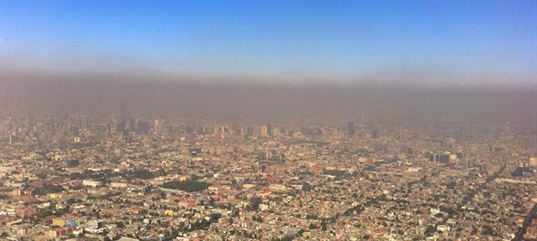Do MicroCare Vapor Degreaser Cleaners Contain Volatile Organic Compounds (VOCs)?
Volatile Organic Compounds (VOCs) are a source of worry because they contribute to low-altitude smog in cities. Obviously, the most common VOC is gasoline, but that is not a regulated solvent so the VOC question never comes up. However, in some regions such as Southern California the government is regulating VOC content in many products, including windshield wiper fluids and barbecue starter fluid.
In general, many of the MicroCare™, Vertrel™ and Tergo™ cleaners contain some levels of VOCs and are photoreactive. This may make them an unacceptable choice in some communities with rigid VOC regulations. Check the Product Specification for more details on the product you are considering as a cleaning fluid.
However, it’s important to realize that many, many common chemicals have a high VOC content. In general, chemicals that have high VOC ratings do not contribute to global warming. Low VOC ratings generally mean a chemical is likely to have a high GWP. It’s like a child’s teeter-totter: one when side goes up, the other side must go down. It is almost impossible for a solvent to be both low in VOC content and low in GWP. The few cleaners that do accomplish this magic trick usually are flammable and would not be suited for vapor degreaser operations.

The burning of organic materials, such as gasoline or coal, produces smog over cities around the world. While solvents are a tiny part of this very big problem, the use of low VOC solvents makes a difference. Photo: smog over Mexico City.
The table below lists the organic content for the industries most popular cleaning choices, almost all of which are available from MicroCare:
Not-In-Kind Benchmarks
| Brand Name or Description | Principle Supplier | Base Chemistry | Organic Content |
|---|---|---|---|
| Water | <Many> | H20 | 0 |
| IPA Alcohol* | <Many> | Alcohol | 790 |
First Generation
| Brand Name or Description | Principle Supplier | Base Chemistry | Organic Content |
|---|---|---|---|
| Trichloroethylene (TCE or Trike) | <Many> | Chlorine | 1460 |
| Perchloroethylene (PCE or Perc) | <Many> | Chlorine | 1620 |
| Freon™ TF† | DuPont | CFC-113 | 0 |
Second Generation
| Brand Name or Description | Principle Supplier | Base Chemistry | Organic Content |
|---|---|---|---|
| Genesolv® 2004† | Allied-Signal | HCFC-141b | 47 |
| AK-225† | Asahi | HCFC-225 | 0 |
| Bromothane™ (nPB) | MicroCare | Bromine | 1350 |
Third Generation
| Brand Name or Description | Principle Supplier | Base Chemistry | Organic Content |
|---|---|---|---|
| Novec® 71DA | 3M | HFE-7100 | n/a |
| Vertrel™ XF | Chemours | HFC-43-10 | Exempt |
| MicroCare™ HDS | MicroCare | HFC-365 | 500 |
| Vertrel™ SFR | Chemours | Trans | 1063 |
Fourth Generation
| Brand Name or Description | Principle Supplier | Base Chemistry | Organic Content |
|---|---|---|---|
| Opteon™ Sion/SF79 | Chemours | MPHE | 278 |
| Solstice® PF | Honeywell | HFO-1233zd | Exempt |
| AE-3000 | Asahi | HFE-347pc-f | 0 |
For the specific details for each product, see the individual Product Specifications available on this web site.
“n/a” indicated the rating is not available.
“Exempt” indicates the product has such a short atmospheric life that it is not considered a significant contributor to low-altitude smog.
* Indicates a flammable liquid unsuitable for vapor degreasing but is included here just for completeness and ease of comparison.
† Indicates a Class 1 or Class 2 ozone-depleting substance no longer on the market; included here just for ease of comparison.
